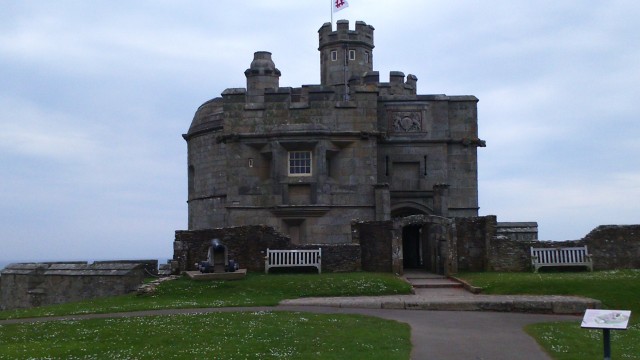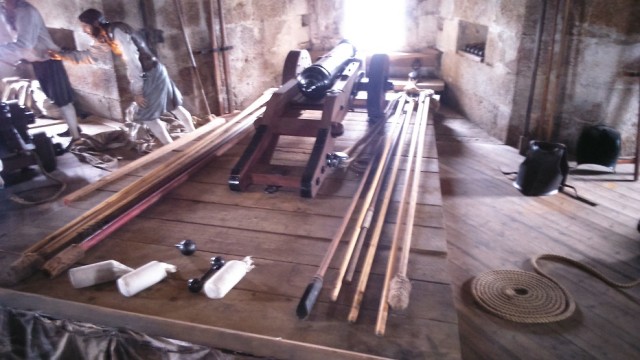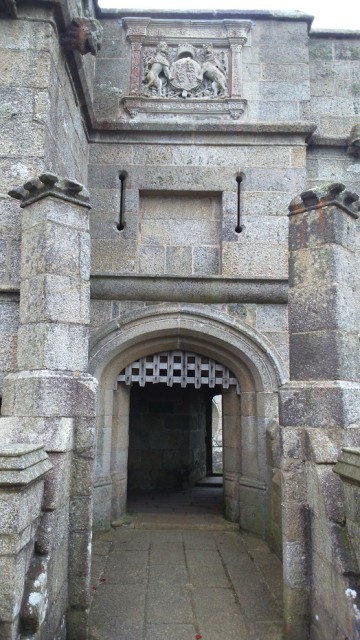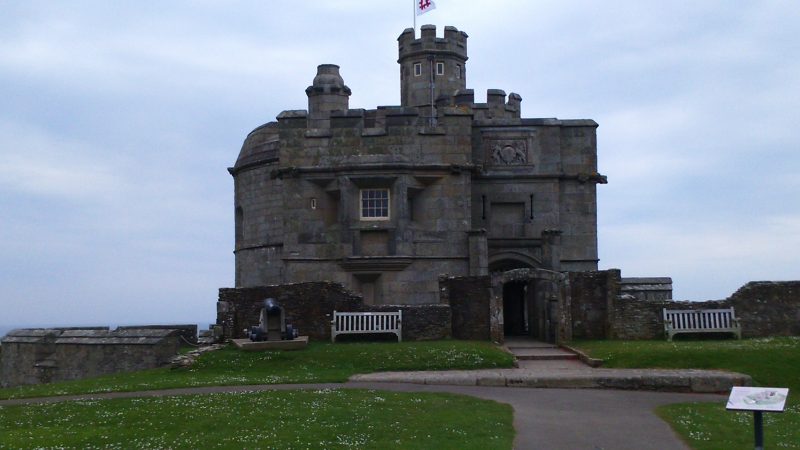Coastal defences have been vital to Britain’s security since the days of the Roman Empire. One of the best preserved historical shore forts, and one that illustrates the development of these defences, is Pendennis Castle in Cornwall.
Henry VIII and Britain’s Naval Defences
King Henry VIII ruled England from 1509 to 1547, a time when the nation was under threat from the growing power of France and Spain. Henry focused much of his military effort into defending the coastline, building up the navy and constructing coastal defences. Using money taken from the abolished monasteries, and even some of the materials with which they had been built, he built forts all along England’s southern shores, reaching halfway up the country on each coast.
Though they did not use all the latest techniques such as angled bastions, these fortifications incorporated many recent developments such as rounded bastions and tiers of guns in concentric circles.
The Early Fort
Built between 1539 and 1545, Pendennis Castle was a fine example of these shore forts. Guarding the entrance to the port of Falmouth on England’s south coast, it was paired with a smaller fort near the waterline and two others on the far side of the estuary, to ensure heavy fire against invading ships.

The initial castle consisted of a round three storey tower with guns on two floors, surrounded by an open gun platform called the chemise. This allowed many guns to fire from a small area.
The Gun Decks
The original design of Pendennis featured two internal gun rooms – entire floors of the tower devoted to cannons – as well as guns on the roof. But the addition of the chemise during construction meant that the view from the lower room was blocked, and so this became a barracks hall.
The gun rooms were designed to serve like the gun decks of ships of the period. A series of windows created spaces for the guns to fire out of. There were alcoves in the walls to store ammunition and vents high up to release smoke.

Despite these vents, a working gun deck would be a hot, smoke-filled, noisy and crowded space. Water was used to prevent the guns overheating as this could cause the powder to explode as it was loaded.
Though Henry VIII spent a lot of money on bronze and iron cannons for his forts, there were never enough to go around. As with the garrison, it was only in times of emergency that the Tudor Pendennis would be fully equipped.
Day to Day Life
Maintaining a fort like Pendennis required a standing garrison. The employment of such permanent forces was a relatively new feature of royal government, and the numbers were kept small during peacetime. When invasion threatened, as in 1578, the numbers at Pendennis were increased up to around a hundred men.
The ground floor of the tower at Pendennis was divided in two to provide a large kitchen and store room. The food was cooked there and taken up to the barracks room to eat. It included a thick vegetable soup called pottage, bread, local fish and ale. Clean water was supplied by lead pipes that collected run-off from the roof and directed it down to the kitchen.
Adding a Gatehouse
The circular design of the castle created blind spots in the fields of fire of the guns, particularly on the landward side. This made the castle vulnerable to attack by land forces, and so between 1579 and 1597 a new gatehouse replaced the original.

Extending from the landward side of the circular tower, the gatehouse had two interior floors and a fighting platform on the roof. Its combination of sturdy doors, portcullis and drawbridge would make any assault a difficult and costly affair.
The gatehouse also provided better accommodation for the commander of the fort. From 1837 its use changed, and it served purposes such as storage, offices and an officers’ mess.
Half Moon Battery
Over the centuries, further walls and buildings were added to the growing castle grounds. These included Half Moon Battery, a large gun emplacement downhill from the original tower. First built in 1793, Half Moon Battery became a key part of Falmouth’s defences and was updated for new generations of guns.
The original guns at Half Moon could fire solid shot two miles out to sea, where their targets were wooden sailing ships. By the time its guns fired on German E-boats during the build-up to D-Day in 1944, they were firing high-explosive shells 13.5 miles out from the coast.
Innovative Artillery
From 1895 to 1905, Pendennis was home to technological innovation in the form of One Gun Battery.
The gun here was built on a pneumatic platform. When it was fired, recoil from the gun caused the platform to sink down into the gun pit, out of sight of the enemy. The crew could then reload in safety.
The pressure in the pneumatic system meant that the gun safely stopped at the right level for reloading. This pressure was held until the gun was ready to fire. On releasing that pressure, the pneumatics pushed the gun back up into its firing position, and the cycle started again.
Life in Command
By the early 20th century, the garrison had grown and over a dozen officers were assigned to Pendennis Castle. An officers’ mess hut had been added to its growing network of buildings. Prior to this, the officers’ mess was located in one of Falmouth’s hotels, allowing the fort’s commanders to get out into town and enjoy comfort away from their men.
Pendennis Today
Today, Pendennis is managed by English Heritage, who keep it open for the public. As well as looking around the castle, visitors can see Second World War coastal guns being fired, a reminder of the vital role this site long played in England’s defences.
Sources:
- Displays at Pendennis Castle, Cornwall.
- David Chandler and Ian Beckett (eds) (1994), The Oxford History of the British Army.
